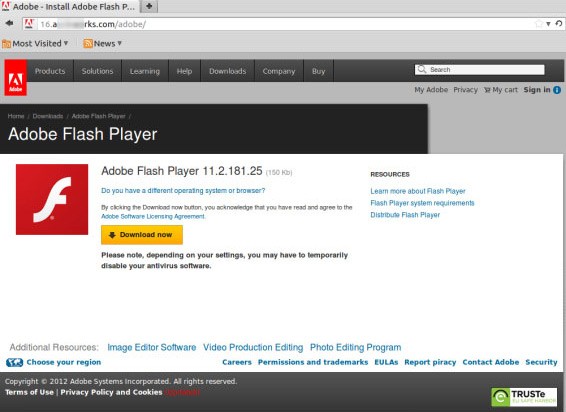

- Chrome mac asking for flash update malware how to#
- Chrome mac asking for flash update malware for mac os x#
- Chrome mac asking for flash update malware mac os x#
- Chrome mac asking for flash update malware pdf#
Johannes Ullrich of the SANS Institute’s Internet Storm Center first reported on the threat, noting that the scareware’s installer was digitally signed with a valid Apple developer certificate, issued to one Maksim Noskov. Instead, social engineering is being used to trick the unsuspecting user into unwittingly downloading and running a bogus version of Adobe Flash - designed to infect their computer with scareware. The beauty of this approach, from the criminals’ point of view, is that the attack doesn’t rely upon any software vulnerability or exploit.
Chrome mac asking for flash update malware mac os x#
The first sign you will see that criminals are interested in infecting your Mac OS X computer is if you see a pop-up like this appear while you are browsing the web:įollowing the phoney alert’s advice to download an Adobe Flash update from a site you have never heard of is, of course, unwise. That’s precisely what criminals are doing now, in their attempts to infect Apple Mac users with scareware. So, what better way to trick someone into having their computer infected than by disguising it as an actual Adobe Flash update?
Chrome mac asking for flash update malware pdf#
Even if you don’t run Flash on your computer, you’ve surely seen the many headlines in the tech media over the years of the importance of keeping Adobe Flash (and its Acrobat PDF Reader stablemate) updated to protect against malicious attack.
Chrome mac asking for flash update malware for mac os x#
For Mac OS X version 10.6 and later, click here, and for Mac OS X version 10.4 and 10.5, click here.

Removing it from an Apple Mac isn’t as tedious as with Windows, but you would still need to do some digging in the folders.
Chrome mac asking for flash update malware how to#
It is a bit lengthy, but here is how to remove Flash from a Windows PC: If you see any such notifications in an email, text, Google Alert or pop-up ad, it is undoubtedly fake. There is no reason for the application to still be on your computer, and it won’t be receiving updates. What can you do about it?įlash no longer exists. Similar applications have in the past also been discovered to be hiding malicious code like Trojans, cryptocurrency miners and software that can steal your passwords. Instead of updating Flash, it will install an unwanted program called One Updater that is most likely malicious. Clicking the update button is a terrible idea.


 0 kommentar(er)
0 kommentar(er)
